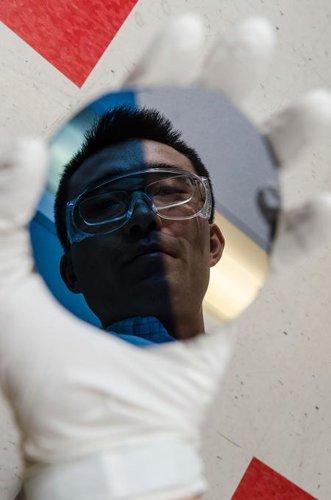A new invention from CalTech could help reverse the effects of climate change.


Apple Watch Alternatives: 10 Gadgets The Company Should Have Made
Apple Watch Alternatives: 10 Gadgets The Company Should Have Made (Click image for larger view and slideshow.)
Whenever I write a Geekend about climate change I know some eyes are going to roll and some people will stop reading. It is normal, because the problem is so big and daunting. But please don't look away this time. I am going to cover a technology that might arrest climate change without you having to do a darn thing. All you have to do is keep driving your car and using electricity and you will be helping the planet.
Before I tell you about this new magical invention, you need to understand something important. This year, the Earth passed a very frightening milestone. In 2007, it was predicted that if the Earth did not stop increasing CO2 emissions by 2015, we would pass a point of no return. Global temperatures would rise at least 2 degrees Celsius no later than 2100. We didn't stop that pace. In fact, we're on pace for a rise of perhaps as much as 4.8 degrees. This would cause rising ocean levels that would put many major cities underwater and cause catastrophic weather patterns. As the World Bank said in a report: "There is no certainty that adaptation to a 4°C world is possible."
At this point, major environmental disaster and the potential extinction of all people is inevitable in our children's (or at least our grandchildren's) lifetimes. The only way to change this is to go beyond simply flattening emissions to actually reducing them to pre-2010 levels or better. By 2050, we have to reduce emissions by 41%, to 72% below 2010 levels, in order to have a chance. Considering we haven't even come close to flat emissions year-on-year, how are we going to do that?
[ Do battery advances offer viable energy options? Read Tesla Battery Looks To Disrupt Home, Office Power Consumption. ]
One solution is to build something called a carbon-negative power plant. Essentially, it is a power plant that creates fuel from the CO2 trapped in plants. The emissions from burning the CO2-rich plants are then captured and buried (it is called Carbon sequestration). Such plants aren't easy to build, and they're expensive, but studies show they can provide some relief. In fact, one study showed that just adding a couple of carbon-negative power plants to California, combined with an existing energy plan involving solar and wind, could reduce emissions by 148% below 1990 levels.
There's another technology that is a little farther away from happening that might be the real answer though: The artificial leaf. I wrote briefly about an artificial leaf in August 2014 that would help astronauts with oxygen. This leaf is even better, though it looks less like a leaf than that version does. It carries out actual artificial photosynthesis.
Created at CalTech, this artificial leaf, also known as a solar-fuel generator, takes CO2, sunlight, and water and creates oxygen and hydrogen. Hydrogen can easily be used to power cars or power plants. The reason we stopped trying to make hydrogen fuel cell vehicles is that hydrogen itself takes quite a lot of cost and energy to create. Using current technologies, it is an emissions wash at best, compared with traditional gasoline-fueled vehicles.
But here's the thing. An artificial leaf takes CO2 out of the air. It then creates a ready source of fuel, which can be burned without emissions. The only emission from burning hydrogen is water. That's a CO2 negative power plant. The more sunlight you turn into energy, the more CO2 you are sucking out of the air. It is like planting more trees without needing to take up the space.
So what's the catch? Well, as usual, it is making the thing on an industrial scale. In a prepared statement, Prof. Nate Lewis, one of the inventors of the CalTech leaf, says it exhibits, "record efficiency, stability, and effectiveness, and in a system that is intrinsically safe." If the technology can be perfected at the right price, you may someday be driving around in vehicles powered by hydrogen created by the sun.
Of course, regular solar power is always going to be cheaper because it has a decades-long head start. It is part of the equation. The problem with solar at this point is that it isn't carbon negative. Yes, we could go a long way if we could turn 100% of our energy production to solar. But the carbon is already in the air.
This technology, or something like it, could allow us to restore carbon emissions to pre-industrial levels without changing lifestyles. We wouldn't be asking anyone to recycle or skimp on anything. Getting people to change lifestyles is the hardest part of the environmental equation. That's literally a solution we all could live with.
Attend Interop Las Vegas, the leading independent technology conference and expo series designed to inspire, inform, and connect the world's IT community. In 2015, look for all new programs, networking opportunities, and classes that will help you set your organization’s IT action plan. It happens April 27 to May 1. Register with Discount Code MPOIWK for $200 off Total Access & Conference Passes.
About the Author(s)
You May Also Like







